Story Pile: This One Fucking Episode Of West Wing
This fucking show.
CoX: Vent
Time to time, I write up an explication of characters I’ve played in RPGs or made for my own purpose. This is an exercise in character building and creative writing.
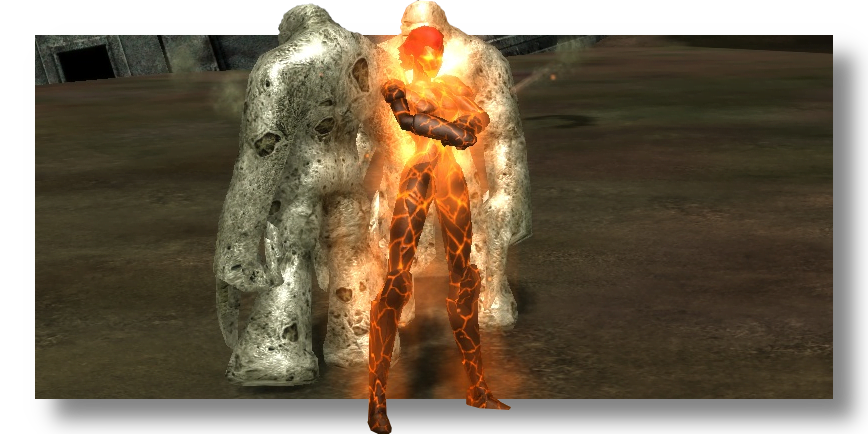
“So, are they fire, or rock?”
“Oh my god, they can’t be both,”
“Or something else, in between?”
“They’re going to have to make their mind up.”
It’s tough being a lava-powered enby. Humans can handle the ‘my skin turns into lava’ part but they get all weird about the ‘gender’ thing, like that’s somehow the big deal. Elementals don’t know what the gender thing is even about, but they’re also really bad company when you talk about music and fashion.
Vinn’s doing the best they can, with what they got.
Continue Reading →Queerer City
You know that game I talk about, from time to time, that game I play, that game, you know that game, that lets you play a character that you create, made through an immersive character customisation system, then you get to choose how they look, get to pick their graphical representation, get to choose maybe how they relate to the world, some beloved contacts and friends and factions that mean a lot to them, and how there’s a lot of fanart of characters made in that game and how they’re all about getting to express and explore this element of a wonderful world with this really exuberant kind of approach to expressing yourself? That game? You know? Final Fantasy XIV?
I kid, I kid. Final Fantasy XIV is a fascinating game full of interesting stuff, I’m told, and it’s fun, I’m told, and I should give it a shot, I’m told. It’s definitely got all the makings necessary for this particular phenomenon – though I don’t imagine it will cross the final threshold necessary any time soon.
See, what I want to talk about here is how a game dies, and what rises out of it.

Game Pile: Nier: Automata
After the fold, there are my notes I used to build the audio for this video.
MTG: Pride
Magic: The Gathering, a Wizards of the Coast product, a Hasbro Partner, is doing things for Pride this month. As they do. As they have done. And it’s hard to grapple with Corporate Pride and this game as a material space doing deliberate actions to include more people.
I think it’s important to remember there are three basic layers of ‘Pride’ at work here. And every detail about Wizards of the Coast as it relates to pride, as a deliberately inscrutable internally silent business, is going to have to be filtered through the fact that this is still the company that treated Orion Black Like This.
Pride Month Youtuber Attention
Hey, you like YOUTUBE CONTENT? Do you like hearing people TALK ABOUT MEDIA? Do you like PAYING ATTENTION TO QUEER CREATORS’ PERSPECTIVES?
Well, sheeiiit, check this out.
Continue Reading →Being Asked If I Am An Egg
Time to time, I share this meme.
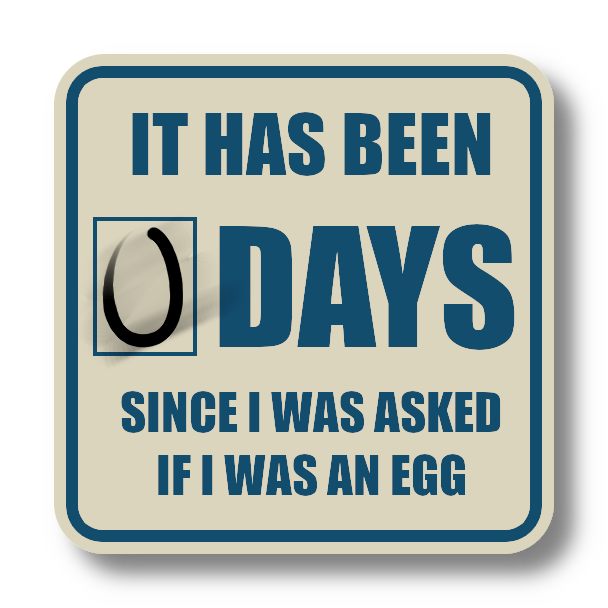
If I have ever shared it with you, please understand it is entirely goodnatured.
Continue Reading →Story Pile: The Old Guard
A long time ago, and by that I mean ‘before 2020’ I spoke to a friend about the Rangers from Babylon 5, where I described the telescoping bo staff for use in combat in space ships where people had space lasers and psychic powers as being both extremely sick and extremely dumb. They then thoughtfully considered that the specific intersection of those two ideas was in fact, the entirety of their jam and I kind of agree with them.
I also have spoken about how ‘queer media’ is in some cases kind of isolated to these spaces where it invokes specific varieties of heavily introspective and personal narratives. It’s your artsy queer films or single moments expanded out into whole narratives, like a repeated argument over a dinner table, that kind of thing. These narratives are not in any way bad, but I don’t like talking much about them. Partly because they are just generally not resonant with me, and partly because they aren’t fun.
I like talking about fun media.
I like talking about the media we engage with because we enjoy it. I like talking about things that excite and inspire, because I don’t think those are separate things. The idea that ‘good’ movies and ‘popular movies’ are opposite elements frustrates me, as a devotee of the subconscious matter of pulp media.
And also, like, good fun media is really hard to make? It’s treated as if it’s a lesser form because big, expensive movies do it and do it a lot, but as with TISM’s expression: pop songs aren’t just more fun, but the constraints of popular media create tension that you can’t necessarily replicate with media that explicitly resists that form.
Anyway, The Old Guard.

Jolene
Jolene is a 1973 country song by Dolly Parton. Without being overblown about it, Jolene is one of those songs that has its own wikipedia page. In a Rolling Stone list of the top 500 songs of all time, it sits in the top half, at 217, and while that entire idea of a list is silly, it shouldn’t escape notice that at least one person with a lot of free time was able to remember it when they tried to compile a list of 500 anythings. That’s too many things.
This song is one of those rare classic soncs that I actually like, but it isn’t exactly one I sing along to or even listen to very often. It’s very mournful and soulful and, as performed originally, it’s a song that’s as much about how much e m o t i o n you can club your audience with. It’s great.
A few years ago, a version of it ‘went viral’ inasmuch as they can, where someone took the original record and played it on a record player at 33 rpm – basically, slowing the whole track down.
This changes the way it sounds, of course. It stays soulful and sad, but now there’s an additional dimension to it. And this did create the feeling of a totally different person with a different sound of voice looking at the song. Sometimes it’s seen as sounding creepy and sometimes it’s seen as scary and sometimes it’s seen as haunting.
And that was a pretty cool find and resulted in a sort of resurgence of the song in my space around me. Suddenly, a bunch of people who weren’t born in the first half of the last century were pointing out that hey, Jolene rules.
And then…
Look it’s not a long reach to listen to Jolene and notice that the protagonist seems to be very impressed with how pretty Jolene is. We have no idea about the dude. Apparently, he’s worth fighting Jolene for, but… we don’t know what he’s like.
But we know Jolene is pretty.
Anyway, so that’s neat!
Thing is, there’s also this other take on Jolene that was first brought to my attention by Andi McClure of Mermaid Heavy Industries. She pointed out that there was a reading of the text where ‘Jolene’ was the man in question; that is, that Jolene is the feminine identity of the ‘man’ the singer perceives as ‘hers.’ Watching her partner struggle with her identity, she sees it as someone ‘taking’ him away from her.
Anyway, it’s wild because despite the fact this song doesn’t pass the Bechdel test, thanks to years of reiteration and attention, and being recontextualised through modern lenses, it’s kinda neat how the song’s become… pretty queer.
The Inherent Queerness of Humanity
So.
Like.
I need you to understand that straight people don’t exist.
Continue Reading →Game Pile: Some Interesting Pride Game Options
Be kind with energy,
Be cruel with purpose.
Shacking Up: Queer Compatibility Card Game Ideas
Okay, so, basic little card game idea: I’m thinking about a game about hooking up at cons.
Now let’s be clear, this is not a game about salacious details at cons. I am not, and have not been, a casual con sex haver, and queerness is not explicitly tied to queer sex. But queer sex is a thing many queer people do, from time to time, in between getting milk and playing Fallout: New Vegas. And when it comes to queer furry cons, I understand that a lot of people, without people to connect to in their home places, will take the opportunity to have some low-commitment, experimental and experiential up-shacking with people who make them feel connected and related to. And so, a game.

Welcome to ERFs
Have you enconutered the term ‘TERF’ and left wondering: Wait, what’s that?
There are some people, TERFs mostly, who think that TERF is a slur. It’s not; slurs are terms used to direct social power against a marginalised group. If you shout TERF at someone on the street, they’re not going to assume someone else is going to attack them because of being so painted. If they are, they’re incredibly paranoid, because TERFs are typically very privileged people who are afraid of being criticised by trans people.
It may sound like I am overdoing it, but I really am not. The typical TERF discourse is an attempt to weaponise outrage at the idea of women facing disagreement from, pretty consistently, other women. But what is a TERF? And what about those other -ERF terms I’ve heard?
So, content warning: TERF stuff! And SWERF stuff! And BLERF stuff! What’s a BLERF? Well, after the fold.
Continue Reading →Yoruichi and Soi Fon
Seems that if I’m going to talk about Bleach, I’m going to talk about lesbians.

Story Pile: The Owl House
Disney did something queer.
Or, well, kind of.
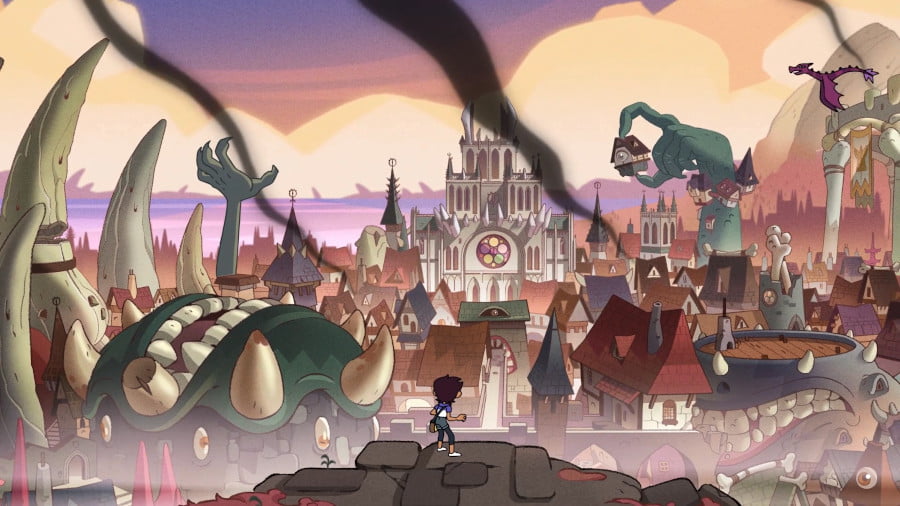
penisland dot net
Ever seen this?
CW: Web 1.0, discussion of some swears.
Continue Reading →The Johnlock Conspiracy Conspiracy
First of all this is going to be building off a point first cast into relief for me by Sarah Z’s video on The Johnlock Conspiracy. She is both directly connected with the experience of this space and did the research into the actual history of the people involved, a sort of on-the-spot observer recounting her experiences ethnographically. If you want a longer form deep dive on what The Johnlock Conspiracy is, check out that video. I will be providing a quick summary.
I’m also going to talk about fanagement, which I wrote about last year, which is about the way that fan engagement was seen as being a thing that corporate entities could deliberately engage for commercial ends. Fanagement isn’t necessarily an inherently evil or corrupting thing, but it’s something to know about as something that exists, and knowing it exists can colour your relationship to the media created in response to fanagement.

Game Pile: Secret Little Haven
Script outline follows.
Continue Reading →3.5 Memories: The Transphobia Of Unearthed Arcana
Content Warning: Mental Health, Transphobia.
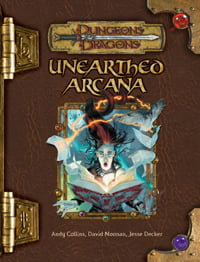
Let’s talk about effort.
Continue Reading →People Misgender Our Dog
Our dog is named Elli.
It’s not short for Elliot, or Ellias or Elijah.
It’s just Elli.
We also use he/him pronouns for our dog, because the complexities of gender are unknown to creatures without language, and without any way for him to self-identify, we just use the usuals. He is, of course, a very good boy.
Elli is very important to our lives. He was part of the decisions we made about where to live; his needs are part of our daily routine; we feed him in the mornings and we feed him in the evening. Our house has structures in place that are designed to give him spaces to be, and things to interact with and ways to make his wants and needs known in our house. We have changed the ways we enter our house in part, because of how it relates to our dog.
Point is, a dog in your life is a force that changes the way you live.
Elli is a lovely dog, and Elli is a cute dog. He is long and elegant and skinny and awkward and he transforms readily between a tiny little snuggly bean and an enormous, splayed, haunted bike rack.
And one of the weirdest things to me is just how much people misgender him.

They call him ‘she’ or ‘girl’ when they hear us call him “Elli,” and then after being corrected, they’ll call him he or boy, and then, usually a few minutes later, they’ll call him her again. And that’s weird.
Like, there’s not a powerful gendering force around dogs or anything. Elli isn’t wearing clothes that code him femme. He’s not a feminine looking dog, in any particular way? I mean, he’s not pink or particularly frilly. He’s just a dog.
That implies to me that the thing that drives it, the thing that makes people think they should misgender him is entirely his name. His name which has one syllable different to a common masc-coded name, is enough that people will assert a femininity there, and that femininity is entirely based around that same syllable.
Genders are social. There is no reason anyone should gender this dog except how they observe him being spoken about socially. He does not care about getting his pronouns wrong, but we do, because those aren’t his pronouns. And it gets under my skin particularly because it’s just this core evidence that people don’t listen to the immediate when it comes to gender. The pressurs from outside, the general trend, are more important than the specific answer they’ve been given.
But what makes this even weirder, is that people apologise for misgendering Elli. They recognise that what they did is a mistake, that they did something wrong, but they won’t, usually, argue with me about it. There’s a clear embarrassment, which is even weirder because Elli doesn’t care. They didn’t hurt his feelings. They didn’t really hurt my feelings watching it, though I probably did feel that they were a little silly.
(Don’t get me wrong, someone did once assert ‘nah, it’s a girl’s name’ and kept misgendering him, and that was one of those reminders that I probably shouldn’t waste my time talking to them)
Anyway, Elli is in my life because of Fox. And it’s Fox’s birthday, so Happy Birthday, Fox.
Pride Month 2021
Hey it’s Pride Month! Hey everyone, it’s Pride Month, get a load of this here Pride Month!
June is Pride Month in the United States of America, to commemorate the anniversy of the Stonewall Riots in 1969 (nice, but not nice, but nice). It’sa month that the United States uses, and therefore, the entire English-speaking Internet uses, to talk about queer causes, queer ideology, and inevitably ask ‘why isn’t there a straight pride?’
So this blog is going to be about Pride Month stuff this month!
The plan is that this month we’re going to talk about queer stuff in general, some stuff about language, some queer games and some queer game design ideas. Note that this isn’t necessarily smoochy stuff – so we’re not necesarily going to be focusing on media about say, gay relationships, per se, as much as we talk about queerness in media in a bunch of different ways.
Particularly, this tends to be a time where I’ll talk about things that people outside of LGBTQ communities might think of them or understand them, ways things are communicated, or the way queerness in media and culture gets represented. I’ll probably wind up talking more about gender stuff and fundamentalist stuff than I’ll talk about necessarily romance this month.
Expect some fandom studies, some queer indie games, some not-queer not-indie games that get called queer games, and some reflections on things like you know, how we celebrate and share the works of one another.
It’s Pride month, remember that every day we live is one we’ve stolen from a system that seeks to make us no more.
June 2020 Wrapup!
June’s down! It’s been a bit of a fog right now, in no small part because some of my plans got spiked. One of my plans was to do give aways and spend money sending people my silly pride themed t-shirts that yes, I am proud of, but also, maybe, now is not the time to be making people do competitions for silly queer shirts. Generally, I feel now is a time to keep my head down, to try and promote some uplifting stuff, and not do things that make me seem like I’m trying to take advantage of this moment.
There were some articles I was happy with: The Speed of Crowds, which was meant to coincide with Games Done Quick, talked about the way that speedrunning was collaborative orchestral art. Holding On To Pride wound up being, it seems, very well-timed to suggest that folks had to be kind to themselves, and why Pride even matters at all. And the somewhat basically named Post About Being A Cis Boy explored how being aware of trans women’s experience did not require some mystic spiritual insight. I was also fond of my article about Burnwillow, who remains a character I think about from time to time when discussing the way we make limited assumptions about what things like trans and cis mean.
There were lots of shirts this month – I’d been banking designs so I could do them all in Pride Month like Last Year. That means we got four designs, one of which was about thirty designs, one of which was a much smaller nine and two more classic designs: Diceheart, This Shirt Says Trans Rights, Pronoun Stamps and Gay Wrath Month.
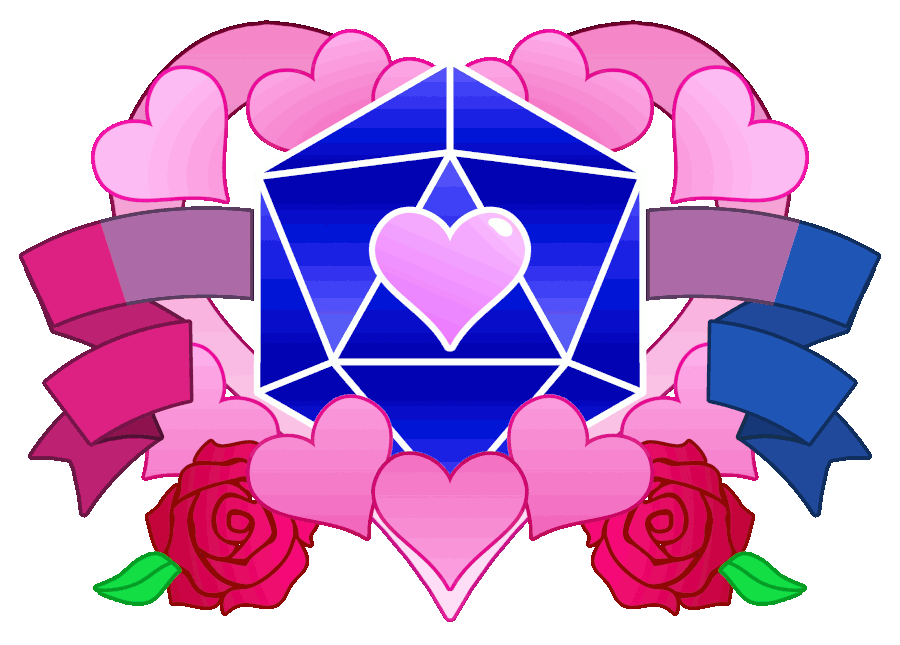
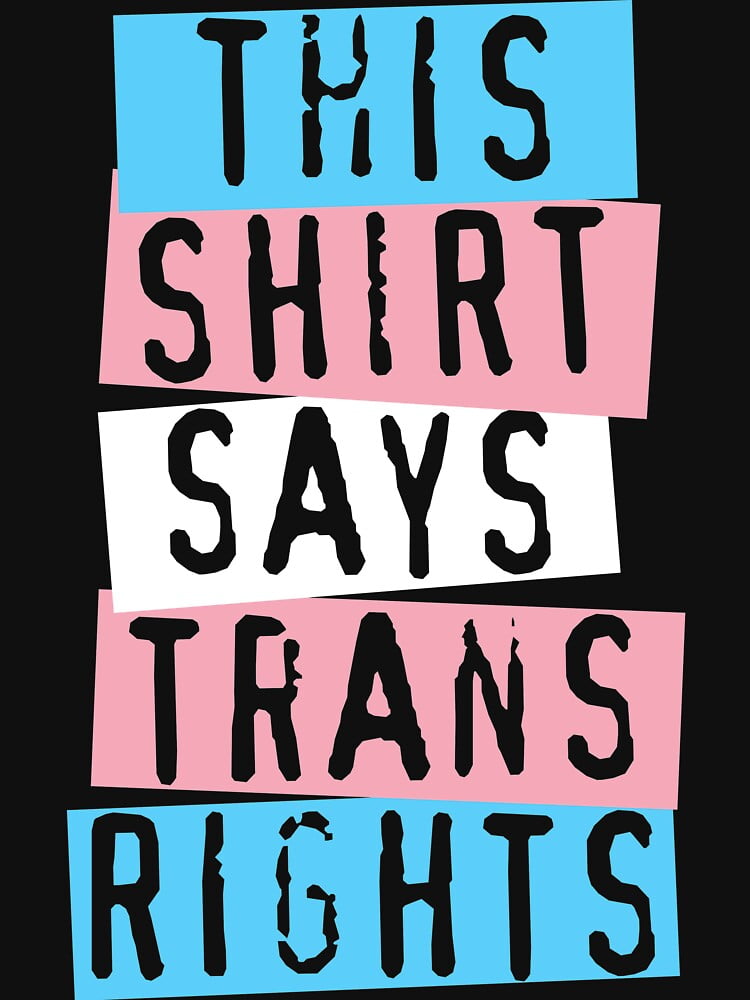
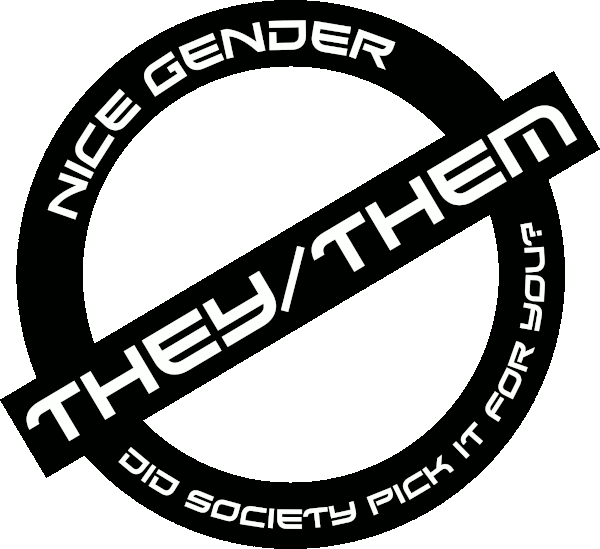

Here’s this month’s video, about Lore Finder! I really liked this game demo, and I’m really glad it dropped when it did, so I could spend my Pride Month game watching a nonbinary person bicker with their parent and turn into a tentacled slimebeast.
June was a month in which teaching came to a conclusion (for now) and my workload got weird (for now). I got to mark student projects, which I do genuinely like doing, because students are great. It was also a month for articles about Pride Month.
Pride month articles were great for everything but the Piles. I hit my limit real quick on the non-Pile articles, and I have been bubbling to see the reactions to this month’s how to be for… some time now. The Story and Game Piles – well, I figured what I’d do is save up all the really queer games and movies from 2019 and early 2020 and pick the best of them to Pile in Pride Month. That just didn’t seem to happen, though, which was a real bummer.
What’s more, I save some slots month to month so that when I hit the themed months, I can do things based on the reactions to existing articles, and uh, you know what hasn’t much happened this month? Everyone has other stuff on their mind.
Story Pile: Hannah Gadsby’s Douglas
I really liked Nanette. I thought it was really good and I wanted to share it around with my friends, because at its best, the Story Pile is an opportunity to just grab all my friends and talk excitedly about something you haven’t seen, or, if you have seen it, to jump up and down with you and show you how clever we both are for liking this thing. I liked Nanette so much I did a very rare video examining it where I trotted out Steve Geyer of all people.
Not to go over my love of Nanette, though, because it was a prickly recommendation at the best of times. Basically a ninety minute long Content Warning with its own absolutely brutal conclusion that nonetheless brought with it some truly body-blowing comedy that oh no here I’m going and praising Nanette again, but the point is, fuck that, Nanette is great, and Douglas is great too, phew, got the subject back into the cradle oh wait now we’re talking about A Knight’s Tale oh well that was great.
Now, Douglas is a show that helpfully starts out with a table of contents. Seriously, Gadsby goes over the themes and subject matter in the show and just tells you what’s going to be going into it, which means my normal concern about spoiling in a show that’s so built on timing and surprise is a little diminished. Particularly, then if I tell you this show is about autism, well, that’s something that she mentions in the opening, and she does so without making the phrase itself shocking or startling.
Continue Reading →The Mysterious Fogs Of Amerimanga
There’s this term that you see sometimes used by digital archivists, called bit rot. It’s this phenomenon where electromagnetically stored media, despite being ostensibly ‘permanent’slowly accumulates non-critical errors in the storage media, meaning that you get these special kinds of errors, which can often result in this eerie kind of work where the structure of what how computers save and store information is different enough to ours that we see things that look really wrong but in a really interestingly recognisable way. Bit rot doesn’t tend to show you media that’s completely alien, just that what it prioritises looks really weird. Sometimes it’s a simple as half a picture being A Bit Green. Sometimes it’s all the colours becoming neon and bright while still keeping as much of the shadows that preserve the image.
Bit rot is not just limited to the data stored on electronic media, though. The internet has its own form of bit rot. Any given site you visit on the internet isn’t necessarily talking to one computer hosting one website. It’s going through a vast network of interconnected components. Websites reference one another, in some cases hosting images on one another, and when you start digging into the old web, you start getting weird errors that, again, are about the way computers preserve things in a way that you wouldn’t expect, because computers aren’t people. The internet, originally conceived as, in part, an indestructible archive of the sum of human knowledge, therefore, has the eerie phenomenon of human archivists who do their best to try and manually ensure the internet is preserved in ways that won’t break over time.
Thus it is for someone who grew up knowing about Crosswinds and AngelFire and Geocities and the like, and came of age during that period where the webcomic boom coupled with the first arrival of the manga market in the west resulted in lots of stuff getting platforms with a lot of things that were normally gatekept away. There was a demand for people to make webcomics and manga and well, that meant lots of stuff got put out there, got a viewing and then… at some point, stopped. And then, with the internet moving on and various platforms taking over, that means those old sources have bit-rotted away.
I bring this up to explain how it is possible that I have this strangely resonant familiarity with the category of media I jokingly call ‘Amerimanga’ without being able to name a single real actual example. I went looking, I really did. I tried to find it – remembering character names like Colvin and Kyle, and transition that was enabled by such wild things as haunted videogame cartridges and the fact someone started reading fanfic about themselves or in one cases, a duck.
The genre is pretty simple: I describe it with an image, usually of some unrelated, or generic non-anime anime source, and then use the title of the thing to describe a very specific plot that has in some way gone off the rails from an existing, ‘legitimate’ framing to instead be about the main character being a girl, and being very in to that.
What happened then was that in this weird little space of webcomics-and-non-manga manga, where often comics weren’t really being overseen and all that could get you driving on to keep going was an audience response, was a lot of people were making the stories they could best throw out, week to week or issue to issue, in some sort of vague, semi-professional, almost-a-failure but-probably-not way. This isn’t to talk ill of this space: Odds are good, it’s just like any other existing community of creatives, where some fail and some succeed and that’s it.
But the most amazing thing about it, to me, is that going back to find this stuff, this little weird bubble of what amounts to ‘fanfiction through to published works that are all tapping the same basic vein of queer feelings, as a weird genre joke, ha ha’ is pretty much… nothing. I can’t find it again.
It’s gone.
It’s old shames or it’s lost histories or it’s pseudonyms that disappear or it’s fragmented onto livejournals. And all that remains is the stuff I can dredge from my memory and pin in place in my silly joking images.
Pride Shirt 4: Gay Wrath Month 2020
As with previous shirts in this, the month of Jesus Christ What Next 2020, these are decorative, fun items that are ways for you to spend your disposable income in ways that amuse you and I do not think that you should view them as making moral statements or supporting me for its own sake.
That said, I’ve been having some pretty complicated feelings about Pride Month of ltae, because Pride isn’t an emotion I ever really feel at the best of times. There are other feelings I’m a little more tuned to.
Here’s this week’s design:

Game Pile: The Lore Finder Demo!
Let’s get squamous.
Some disclosure here, in writing: I backed this game on kickstarter! A friend of mine was hired to write for this game after the kickstarter succeeded! I am looking forward to this game already!
The Complicated Explication of Danielle Bunton Berry
Hey, CW here, folks. This is about a trans woman, who did some cool things, and died, but it’s also about how bad and limited my means are to communicate about her. You won’t miss much if you skip it, and if you want to know a more traditional approach to Berry’s legacy, you can check it out here on this eight year old GamaSutra link that I am not going to vouch for, but which presents a number of the quotes I sourced before realising I was in trouble.
Being The Thing On The Doorstep
Lovecraft is a super useful thing to use in classes about games and media. First, it’s a deeply thematic part of a lot of games culture. It’s also a way to introduce ideas of copyright and media ownership, there’s that. Then there’s conversations about accessibility and who the work excludes, because of how ornate and wrought the type of text is, and how you can overcome that with signalling and clear communication.
There is a way that he slows things down, though, because no matter how we cut it, bringing up Lovecraft means we tend to open with the dude was a massive racist, but, and then there’s a conversation about what we do with the work of bad people, and it just slows the conversation down. It’s understandable, mind you. Particularly, he was definitely racist as hell and racist themes are throughout his work; he was misogynist as expressed by the absence of women with agency in almost all his stories, and then you start to look for other axes he bothered to mention.
What’s particularly wild is the dude actually did manage to veer into transphobia, and not just in shaded tropes; given the way stories are normally structured in our science fiction and fantasy space, trans and cis status are normally subjects that require invoking information that we don’t get. It’s possible every Lovecraft protagonist is a trans man and we’d never have a reason to know, for example. That means bringing in transphobia involves going to something that you normally don’t have to bring up in order to kick it around.
In the story The Thing on the Doorstep, spoilers for a century old short story that’s not that good, but whatever, in The Thing on the Doorstep our narrator and kinda protagonist observes his best friend decaying in real time from a marriage to a woman that ruins him. Eventually he discovers that his friend has been married not to a woman, but rather, a man in a woman’s body, and that man then takes his friend’s body, leaving him in an older body it had, and that is the titular thing on the doorstep that the protagonist encounters. The horror of ‘what if the woman you got in a relationship with was actually a man’ is a very, very old, very well-worn trope, and it’s transphobic at root.
Lovecraft wrote about encountering alien minds and the strain it put on the human who was reading it to comprehend it. That there were certain mindsets – just ways of thinking – that were so fundamentally aberrant to humans that contemplating them could force the mind to adhere to alien programming and fall apart. There’s a twofold fascination that follows for me.
First, Lovecraft’s aliens and the horrors they represent are all things that a scientific mind can grapple with: There’s a thing I didn’t understand, and we can prove its effect, and so in cataloguing it, we can handle and understand that information. That means that the vision of rationality that Lovecraft had for his period of time was completely at odds with actual rationality – that information people couldn’t handle was in fact literally incompatible with their brains. For all the racism in his work, he paints there as being a whole category of people who can handle dealing with this information, and that’s the other. If you’re trans or queer or a person of colour, in Lovecraft’s world, you can actually handle that nonsense that wrecks white people from the mind out.
If you’re basically anything but a Prince of Privilege, in Lovecraft’s vision of the world, you are the monster. You are the beast from outside. You can move between mirrors, you can see the undersea places, you have the ancient knowledge and you can move amongst the most dreadful forces, and you’re fine. That’s wild. He’s so intent on dehumanising the nonwhite that it involves turning the white into the weakest, most pathetic type of person there is; completely unprepared and incapable of being alive in this dreadful world. It’s racist, sure, but it’s racist in a really pathetic way.
Here’s the other thing, though.
It is fundamentally hard, if not impossible, really, to get a grip on how Lovecraft thought this stuff. It really is. This dude was so racist he was able to get himself divorced for being racist in 1933. When we talk about the dude there’s this framing and apologetics about just bringing him up, as if we can’t let his racism pass without also making it an excuse to drop the topic.
Lovecraft’s racism is so utter and confusingly fearful that it’s kind of hard to really get. It’s hard to explain or explore it without a lot of deep reading of his work, and that’s something that I’ve been thinking about a lot lately. Lovecraft was so racist that trying to think like him now doesn’t make sense, because with the benefit of a century of hindsight, everything the dude thought is aberrant to natural, civilised, adult thought.
Lovecraft wrote about a world of alien, parisitic monsters that consumed humanity and destroyed you by following its thought patterns and did not care about what affect it had because it would outlast any one person it ended.
Lovecraft never realised he was the monster.
How To Be: A Squid Maid (In 4E D&D)
In How To Be we’re going to look at a variety of characters from Not D&D and conceptualise how you might go about making a version of that character in the form of D&D that matters on this blog, D&D 4th Edition. Our guidelines are as follows:
- This is going to be a brief rundown of ways to make a character that ‘feels’ like the source character
- This isn’t meant to be comprehensive or authoritive but as a creative exercise
- While not every character can work immediately out of the box, the aim is to make sure they have a character ‘feel’ as soon as possible
- The character has to have the ‘feeling’ of the character by at least midway through Heroic
When building characters in 4th Edition it’s worth remembering that there are a lot of different ways to do the same basic thing. This isn’t going to be comprehensive, or even particularly fleshed out, and instead give you some places to start when you want to make something.
Another thing to remember is that 4e characters tend to be more about collected interactions of groups of things – it’s not that you get a build with specific rules about what you have to take, and when, and why, like you’re lockpicking your way through a design in the hopes of getting an overlap eventually. Character building is about packages, not programs, and we’ll talk about some packages and reference them going forwards.
And now, it’s Pride Month! Since I haven’t done one of these on a single straight character yet (if you believe my fanfics), I had to do something a bit special and out of the ordinary, and so, let’s do something that’s extremely culturally important.
That’s right. It’s Squid Maids time.
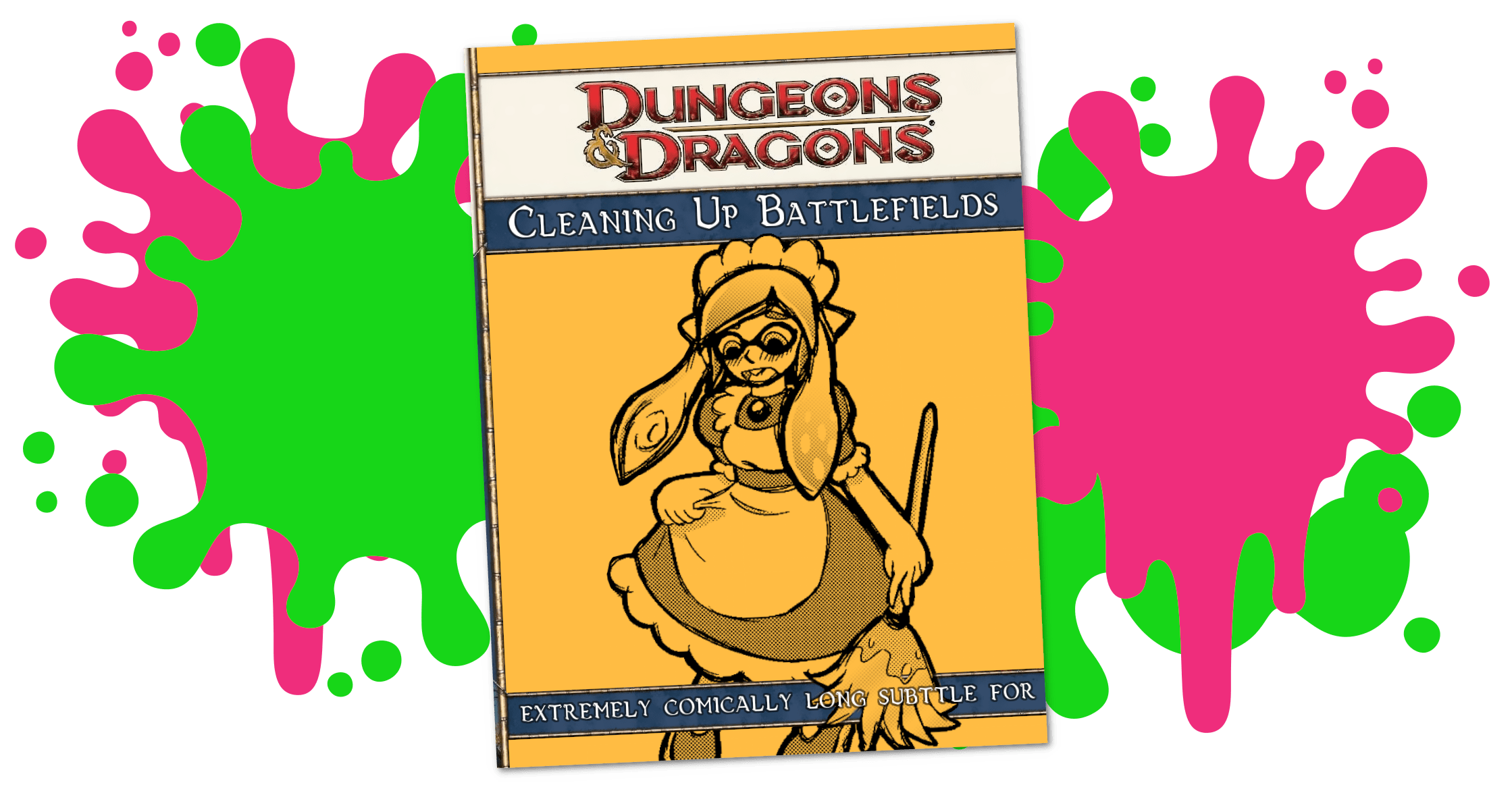
Story Pile: Smokin’ Aces
When I resolved to not spend this month complaining about queer media I didn’t like, nor to subject myself to queer media in a form I knew I wouldn’t like, I didn’t realise how challenging that was going to make things since I didn’t have another Wynona Earp land in my lap. That meant going back through either movies I meant to comment on or movies I had commented on but never on the blog, and to my amazement, I found this.
The Speed of Crowds
Okay, this isn’t a pridey thing, but given the number of queer speedrunners, let’s just say it’s queer adjacent. Also, at the time I write this, there’s a very real chance there’s not going to be a Summer Games Done Quick Event, the thing that I, originally was timing this article to go up alongside. So be it all.
Anyway, speedrunning. It’s great, it’s a cool thing, you should check it out because it’s as big as the ocean and you’ll find your own particular little slab of coral reef with weirdo little orangey fish that do that bloop thing with their mouths that you find yourself immensely invested in and wanting to hang around there to see which of the orange fishes are the best at, I guess, getting little grubblins out of the reef and the comparison of observing competitive sport to ecosystem observation isn’t perfect but it’s also more apt than you think it is because this entire thing is so much about where you choose to be. I’m not going to explain speedrunning myself, because a nameless bloodstained rival of mine has already penned that text, and I’m sure we can talk it over when we next meet atop a cathedral with blood staining my fingers and duel not so much for the honour we say it’s about but as much just for the sting and the pain of it all, but anyway, the point is, go click that link it’s going to cover stuff I don’t have time for or the methodical mindset to cover.

Part of my job is putting what we call text into a position where you can see the lines that connect it to the things that may have been responsible for its creation or things that may help you understand the way that that text in ways it may or may not be intended. The way I describe it to students who are dismissive of the difficulty of the degree is that media studies is merely the study of how literally every human being interacts with every other thing that exists or doesn’t exist. This can be deeply confusing for people who want experts to give them meaningful answers, to be consulted directly and spit out a useful or usable answer, which we kind of just don’t tend to do in media studies, because so much of what we’re dealing with is examining culture which runs on a level that is simultaneously saturating through and yet also the surface that everything else runs on and beholden to their forces in a sort of whole general mish mosh of stuff.
It’s complicated.
Point is that you come to this blog to hear someone who’s got a lot of practice writing this blog, and by ‘hear’ I mean ‘read’ and by ‘read’ I mean what Marshall McLuahn referred to as making an ear of an eye, which is some body horror shit right there but the point is that that thing I did there where I dropped someone you never heard of but you could look them up on google and be told they wrote a bunch of books and they have a wikipedia page and were probably a skeevy sexist or racist and you don’t wanna necessarily go digging into their books yourself so you’re happy to let me serve as an interpreter because the odds I’m that bad aren’t so bad, that sort of intercessionary media is kind of what I do and when it comes to speedrunning, I need to pull off some impressive bullshit to try and relate this work to a greater academic space in a way that’s funny or engaging.
I’m not about to write a piece like Speedrunning Science, nor my nameless foe’s beautiful introductory and expanded primer, and there are funnily enough not a lot of people who had opinions on how this kind of thing worked, though I think with some minor contortions I could get you to ‘Roger Caillois thinks that speedrunning isn’t a game, but speedrunning with twitch chat live is.’

What I do want to talk about though is how speedruns are an interesting form of collaborative art, which may seem a little weird to those of you who watch these events where you get to see a runner executing a run a sort of gamer tribute when we refer to people as the best or world leader or the fastest or next level or whatever wording you favour when you hear these people described as the people who try over and over and over again, missed the first split, break, try again, missed the first split, try again, bad first level spawns, reset, try again, even if maybe you notice the way that every single one of those runners will espouse that their community is literally the best and they’re all so great and this trick, this Greg Egg Trick, all of that, all of that can be seen as a sort of breathless, collaborative communal composition.
DwangoAC, the spokesperson for TASBot, has drawn a direct parallel between TAS (or tool assisted speedruns okay I guess I’ll do a bit of nomenclature), and the historical device of a player piano. The player piano is a machine that’s designed to be played – it’s a piano, after all – but it contains within it a device that lets you feed into it someone else’s composition and let the machine play itself. The composition, the paper you feed into the player piano, is itself a sort of coding for the machinery, and that composition is made by the work of multiple people, coming together to form a rendition that you can replay in your home.

This vision of a machine that plays itself being a form of play is extremely interesting to me, especially as a games studies… person… where the question of what new and weird forms of gameplay even are, with my massively permissive vision of game definition. I’ve argued that players watching a game on twitch and contributing via chat are playing a game (though not the same game as the person they’re watching), it’s just the control mechanism is extremely obtuse, and that they’re playing a game with the person playing the game.
When you’re watching a speedrun, the metaphor of music is applicable once again, because every speedrun is not just the execution of the one runner in front of you but the combined and contributed effort of an orchestra of people who have played alongside that person, encouraging them and showing them techniques, helping them practice, driving them to succeed, filling out leaderboards and showing them what can be done, what can work as the communal effort shaves the techniques and design down, and down, and down, as if you have a composition of a single whole piece, where the orchestra perform it in isolation but each composer is working on nailing down sometimes sections as small and as refined as a single
note.
Speedrunning is cool, and the best speedruns can, for all that it’s a meme, be the product of an amazing community.
Shame about all the gross fuckin’ transphobes though. Don’t let those people be welcome.